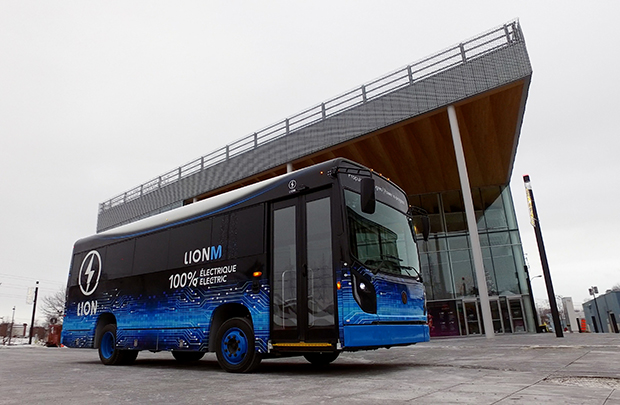Making a gift to an heir during your lifetime has tax implications that you need to be aware of in order to make the best choice.
A gift is essentially a gratuitous contract whereby one person (the donor) transfers ownership of property to another person (the donee).
The donor is therefore poorer and the donee is richer because the transfer is made without consideration.
What is the property in question?
Generally, gifts include the following:
- Money,
- Shares of private corporations,
- Investments (listed shares, bonds, investment funds, etc.),
- Properties (primary residence, secondary residence, rental property, land).
Depending on the nature of the property transferred and the relationship of the donee to the donor, the tax consequences will be different. You must therefore be aware of these different impacts before undertaking the transfer.
Tax impacts similar to a sale
For tax purposes, the general rule is that a gift is considered a deemed disposition at fair market value of the transferred property.
This has the same tax implications for the donor as a sale, such as a capital gain or loss and a recapture of capital cost allowance for depreciable property, if applicable (e.g., a rental property).
When the donee disposes of the property at a later date, the resulting tax implications will have to be declared in the donee’s own income tax return.
Gift of money
There is no tax payable by the donor or the donee on a gift of money to a family member.
Exception between spouses
Where a gift of property is made to a spouse or common-law partner, there is an exception to the general rule mentioned above.
Provided certain conditions are met, the disposition is made at the cost (also known as the “adjusted cost base”) of the property or, in the case of depreciable property, at the amount equivalent to the undepreciated capital cost (UCC). This exception is to the donor’s advantage since at the time of the gift there is no amount to be included in income.
In the event that the donor wishes to trigger tax consequences at the time of the donation, the donor may elect to transfer the property at fair market value rather than cost.
Attribution rules and tax on income
Once the property is transferred to another person (spouse or common-law partner or minor children), there are special rules for the taxation of income (losses) from the property and capital gains (losses) from its subsequent disposition. These are known as “attribution rules”.
Essentially, these rules are designed to prevent the transfer of property income or capital gains to a donee who is taxed at a lower rate than the donor.
As you can see, there are several tax rules involved in a gift that you should be aware of before transferring the property to avoid costly mistakes.
21 Nov 2022 | Written by :
France Vézina is a tax expert at Raymond Chabot Grant Thornton. Contact her today!
See the profileYou could also like to read
Next article
Updated on November 20, 2023
In the current inflationary context, SMEs are facing many challenges. What are some strategies for coping?
Inflation is hurting SMEs. In addition to competition from web giants in online business, SMEs in all industries are facing labour shortages, resulting in higher wages, higher procurement costs and less flexibility from suppliers.
Are you an entrepreneur experiencing difficulties? Here are some tips to help you deal with these issues.
Analyze your data
Nothing is more important than analyzing your financial situation and your results based on the data collected. The more you know about your market and your situation, the better you can act and make the right decisions.
Here are the steps involved:
- Analyze your data over a three- to five-year period;
- Review changes in your contribution margin;
- For each product or service, calculate your costs, profit margin and breakeven point;
- Determine which products or services are profitable or unprofitable;
- Keep track of your fixed costs such as rent and insurance;
- Ask yourself what your competitors are doing: when do they increase their prices?
In short, take stock to understand what is working and what is not and react quickly.
Review your rates and offering
Some of your products or services are cash cows and others are black holes. Keep the ones that generate the most money. In addition, it is important to work in collaboration with:
- Your sales team: they are in the field and will undoubtedly have some interesting solutions to suggest.
- Your clients and suppliers: in retail, for example, you can implement discounting strategies or bigger batches.
Consider whether it would be appropriate to charge for additional services such as storage, delivery or return services, packaging or product customization.
Optimize operational performance
In-house work processes can consume time and energy and even cost you money. You need to optimize your processes to make them flow.
- If you’re in manufacturing, ask yourself how to reduce your factory downtime.
- Work on the quality of your service to limit rework and returns. This will help you maintain your margin.
- Invest in digitization. The initial cost may be high, but investing in new technologies will save you money in the long term and increase your business’s efficiency.
- Robotize your administrative processes
Manage human resources strategically
Salaries are not the only thing your organization can leverage. There are many variables that come into play and you have some power to implement or improve them.
- Limit inflationary wage increases. Other than salary, what other benefits can you offer your employees?
- Come up with creative ideas to keep your compensation competitive.
- Build a strong employer brand that will help retain your employees.
- Make sure you make employee onboarding a success.
- Integrate training programs into the company.
- Involve your employees in cost reduction improvement projects. They have ideas too.
Innovate
What you do today may not work in the future. It may be worthwhile to change your manufacturing formulas to reduce your input costs.
For example, create dedicated innovation teams to look at improving or changing services or products, formats, derivatives and replacement parts.
Think about ways to optimize the way you make products or deliver services. This can be done by incorporating technology, changing your work processes or outsourcing some costly activities to suppliers who have more expertise than you.
Improve procurement management
This is a part of your business that warrants close analysis and monitoring.
You can, for example, establish partnerships with your suppliers to see how you can do better business together.
Be careful to distinguish between sourcing and buying: sourcing means comparing suppliers’ offers and then requesting bids. Sometimes it’s best to choose not to sell certain items and keep only the most cost-effective ones. You need to build strong partnerships and look for alternative solutions.
Keep an eye on the market and learn about potential suppliers and partners.
Define a clear vision and strategy
What is your objective? Are you looking to cover cash flow? Fixed costs? Improve gross margin? By using data, you can adjust your strategies and generate revenue in a different way.
- Set clear goals and communicate them;
- Involve your employees in the solution;
- Measure improvement and celebrate success;
- Align compensation with gains;
- Have a contingency plan.
Prepare financial forecasts
If your company is experiencing difficulties or if you’re looking for shareholders or business partners, preparing a financial forecast for a 12 to 24 month period will allow you to demonstrate to them that the company is in fact viable, by implementing a very specific action plan.
The document must demonstrate that your plan is sound and reassure your current or future partners. The business outlook should be translated into a financial forecast. Don’t forget that financial partners often evaluate entrepreneurs their responsiveness.
- Reflect on the impact of the various measures;
- Determine short- and medium-term funding requirements;
- Analyze sensitive points and break-even points;
- Identify ratios;
- Identify internal and external risk factors;
- Establish the indicators to be followed in order to maximize the plan’s chances of success;
- Review the budget regularly.
To survive these inflation-driven changes, you need to adapt by reviewing your action plan. You need to update your forecasts to reflect current conditions, review your costing and look at your operational performance.
Inflation is not your fault, but you have the power to adapt. For some companies, this change can even become a competitive advantage. Don’t hesitate to consult an expert who can help you see things clearly.
15 Nov 2022 | Written by :
Next article
Updated on November 20, 2023
How do you stay competitive on the salary front without going overboard? Here are a few factors to consider when determining your strategy.
Despite what some employers may think, compensation is a major reason for employees to leave an organization. How can you use it as a tool to retain as well as attract employees?
Implement a fair internal salary structure
Some companies, mainly SMEs, have a limited or no appropriate salary structure. It is important to determine the value of the jobs within your company, and not only the value of an individual’s CV or profile. This evaluation, based on objective criteria, will allow you to group jobs with a similar level of responsibility, and then build an appropriate salary scale.
The structure does not have to be complicated. It can simply be a competitive salary scale, tailored for each position. Employees will know their salary can progress over the short and medium term. Being able to see themselves in the future reinforces their loyalty.
Naturally, you need to consider the market. Several public studies and data are available to estimate the competitive salary that should be offered for each position. This applies to operational (labourers, clerks), tactical (supervisors, professionals) and strategic positions (managers, directors) alike. The salary needs to reflect the level of skills required.
Companies that offer profit sharing incentives should make them available equitably to all employees who meet performance objectives.
Enhance direct compensation
Employees want access to benefits that suit their situation, in addition to their salary. This is where employers can be creative without going overboard on salaries.
For example, the company could consider offering:
- “Workcations”, a mix of work and vacation that allows employees to work from anywhere in the world for a few months every year;
- Access to a cottage so employees can work in a different environment;
- A schedule tailored to the employees’ needs (taking equity and the specifics of the job into account);
- Unlimited vacation;
- Working remotely (fairly standard now in most businesses);
- Access to a fitness room, yoga courses, a corporate card to go to a spa;
- Telemedicine consultations and repayment of health and wellbeing expenses;
- Onsite daycare;
- Planned social events;
- Mass transit cards and free parking;
- Dry cleaning service to save time;
- Reimbursement of the cost of training.
Options also include medical and dental insurance, a pension plan (group RRSP, defined benefit or defined contribution plans, VRSP for SMEs) and a personal assistance plan (PAP).
Staying competitive
It is essential to make employees realize, through a total compensation statement, that these benefits are added to their salary and increase its value. For example, an employee earning $60,000 per year may find that they actually earn $72,000 when they add in their benefits.
Inflation should not be the only criterion for a salary increase. It’s a matter of balance. If your salaries are too high, it can put your company in a difficult position when it comes time to purchase equipment or go through a slow period. An excessive increase may have the opposite effect and result in layoffs rather than retaining employees.
Even though the Consumer Price Index (CPI) has varied from 5.1% to 8.1% in Québec in 2022, the Ordre des CRHA has noted that salary increases range from 3.7% to 4.5%. In order to control these increases, which are higher than in the past, some companies are offering two salary revisions per year to react to inflation in real time. Employees appreciate this practice.
Employers need to be aware of the salaries and benefits offered in their industry to make attractive and creative proposals. But opportunities for advancement, company values, employee recognition are also part of the total compensation package and are incentives that should not be underestimated.
08 Nov 2022 | Written by :
Philippe Marceau is a Human resources expert at Raymond Chabot Grant Thornton.
See the profileNext article
To accelerate the transition to a sustainable economy and reduce greenhouse gases (GHGs), it is essential to address transportation. This is what Lion Electric is doing, one truck at a time.
Our firm is pleased to have supported this company through different stages of its development. To find out more about the company and the new economy it represents, we spoke with Patrick Gervais, Vice-President, Marketing and Communications at Lion Electric.
The heavy- and medium-duty truck and bus sector alone accounts for 43% of transportation-related GHG emissions. “Trucks are the most polluting vehicle where we can have an immediate impact. A single truck produces 75 to 100 tonnes of GHGs per year,” says Patrick Gervais.
Fully electric company
Founded in 2008, the company has gone green over time, stepping away from gasoline-powered vehicle production to focus on all-electric Class 5 to Class 8 buses and heavy-duty trucks.
The development of 100% electric school buses started in 2011 and the first vehicles were introduced in 2016. Since 2019, the company no longer produces any diesel vehicles.
With a current order book of 2,300 vehicles, it is clear that this was the right decision. In 2021—the year it went public—Lion Electric delivered 196 vehicles. By June of this year, the first six months of 2022, it had delivered 189 vehicles.


Challenges met with flying colors
To meet its commitments, Lion Electric increased production speed by 72% in one year at its Saint-Jérôme plant, and acquired a 900,000-square-foot facility in Illinois, USA. The company has grown from 115 employees in 2018 to more than 1,300 today, including 350 research and development engineers.
Lion Electric designs, manufactures and assembles several key components of its vehicles: chassis, battery packs, truck cabins and bus bodies.
The company will also be commissioning a battery pack assembly plan in Mirabel by the end of the year, thereby securing its supply.
“With more than 700 vehicles on the road having travelled over 16 million kilometres in North America, Lion Electric has already made a difference for society and the environment,” says Patrick Gervais.
Although heavy electric vehicles are still more expensive than gasoline-powered vehicles at this time, buyers have already achieved significant savings: 80% in energy costs and 60% in maintenance costs.
What are the challenges of electrifying heavy vehicles?
Incentives needed
While there is some discussion about incentives, they are part of the solutions arising from public policy to support the energy transition.
“Financial incentives and regulations are key to accelerating the electrification of transportation, but there is a growing sense of awareness that it is a worthwhile solution,” says Patrick Gervais.
Regulations to control the market
The electrification sector must aim for full supply chain integration and ask the government to regulate tenders to ensure that assembly is done in Canada with Canadian content in order to counteract the competition between industrialized countries.
Lack of charging stations
Electric trucks still do not meet long-distance transportation needs, but the range can be from 250 km for buses to 400 km for trucks.
The availability of charging stations throughout the country is reducing range concerns. Technologies are advancing rapidly, and in a few years, long-distance transportation will become a reality.
Charging time
Lion Electric created LionEnergy to help buyers determine their specific charging needs and manage the charging infrastructure installation to optimize the transition.
Change management
Employees must be open to innovation because the world of electrification is moving fast.
This is a growing industry and Lion Electric is well positioned in this rapidly evolving market to participate in the future challenge of reducing the environmental impact of businesses and people.








